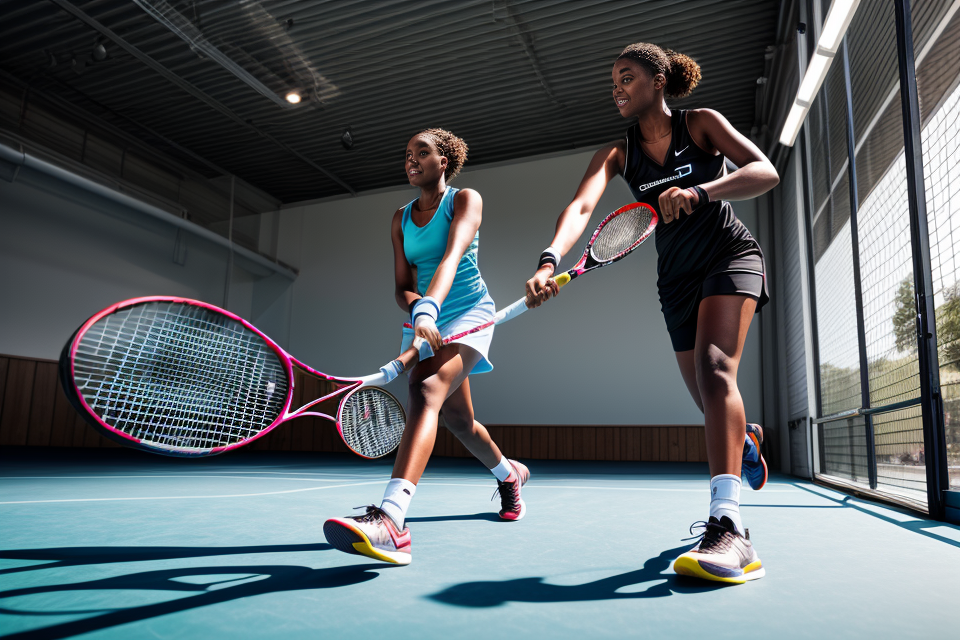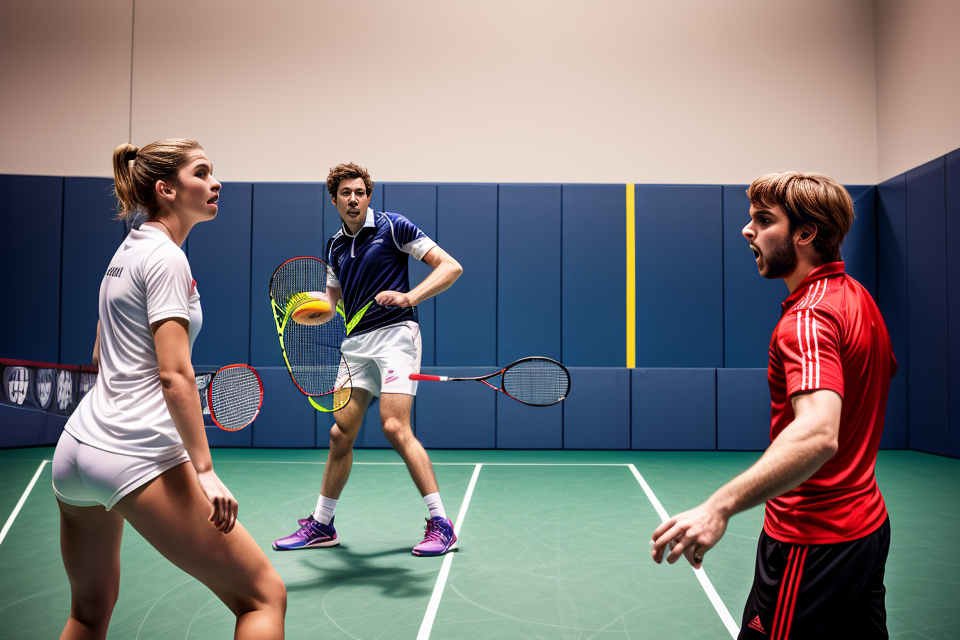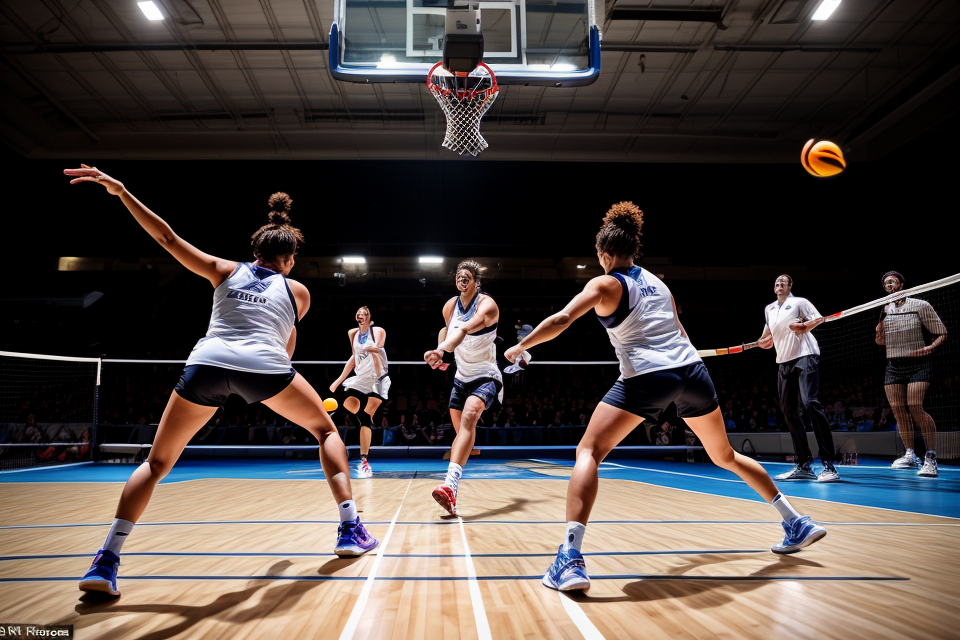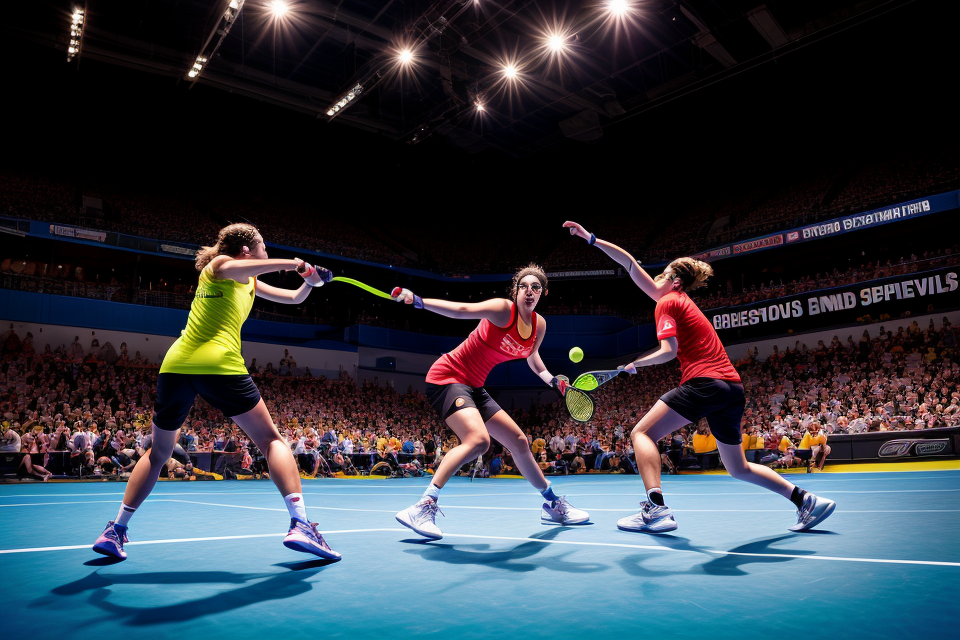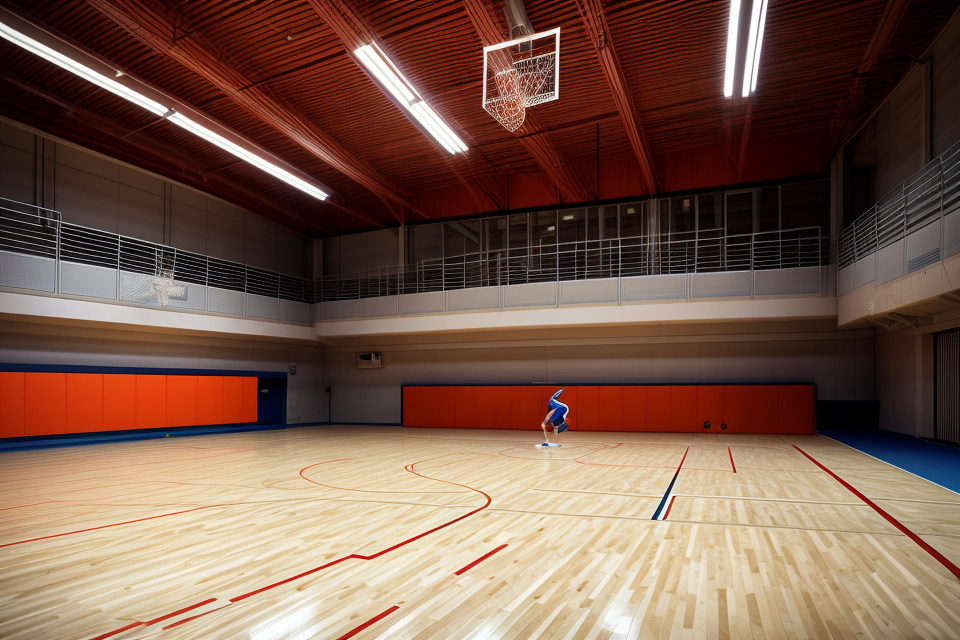Squash is a physically demanding sport that requires agility, speed, and endurance. Playing squash can be a great workout, but it can also be a challenging and demanding game that requires the right attire. Whether you are a beginner or an experienced player, choosing the right clothes to wear when playing squash is essential to ensure your comfort and performance on the court. So, what do you wear when you play squash? In this article, we will explore the appropriate attire for playing squash and provide you with some useful tips to help you choose the right clothes for your game.
The appropriate attire for playing squash typically includes comfortable, athletic clothing that allows for a full range of motion. This often includes a fitted t-shirt or shirt with short sleeves, as well as athletic shorts or tennis-style shorts. It’s important to wear non-marking, non-slip shoes with a good grip on the bottom to ensure safety on the court. Some players may also choose to wear wristbands or sweatbands to help keep their arms and wrists dry during play. Additionally, it’s a good idea to wear a sweatband around your head to keep your hair out of your face and to help keep you cool. It’s also a good idea to wear a mouthguard to protect your teeth and lips during play.
Dress code for squash courts
Appropriate clothing
When it comes to playing squash, the appropriate attire is crucial for comfort, flexibility, and performance. Here are some key aspects to consider when choosing what to wear on the squash court:
- Comfortable, flexible clothing: Squash is a fast-paced sport that requires quick movements in all directions. Therefore, it’s essential to wear clothing that allows for maximum range of motion. Choose lightweight, breathable fabrics that won’t restrict your movements, such as cotton or moisture-wicking synthetic materials. Avoid wearing heavy or restrictive clothing, such as jeans or dress pants, as they can hinder your performance.
- Moisture-wicking materials: Sweating is inevitable when playing squash, especially in warm environments. To keep yourself dry and comfortable, opt for clothing made from moisture-wicking materials, such as polyester or nylon. These materials draw sweat away from your skin and towards the outer layer of your clothing, where it can evaporate more easily. This helps to regulate your body temperature and prevent discomfort.
- Non-marking, non-slip soles: Squash courts are typically made of a smooth, shiny surface that can be slippery, especially when sweat is involved. To prevent slips and falls, it’s important to wear non-marking, non-slip soles on your shoes. This will give you better traction on the court and help you maintain control of your movements.
- Proper footwear: In addition to non-marking, non-slip soles, it’s important to wear proper footwear for squash. Look for shoes that provide good support and cushioning, as well as a sturdy grip on the court surface. Avoid wearing shoes with a lot of lugs or treads, as these can scuff up the court and leave marks.
Overall, the appropriate attire for playing squash should prioritize comfort, flexibility, and performance. By choosing lightweight, breathable fabrics, moisture-wicking materials, and proper footwear with non-marking, non-slip soles, you can ensure that you’re well-equipped to play your best game on the squash court.
Inappropriate clothing
When it comes to playing squash, it is important to dress appropriately to ensure comfort and safety on the court. However, there are certain types of clothing that are considered inappropriate for squash and should be avoided.
- Clothing with zippers or buttons: Clothing with zippers or buttons can catch on the squash court’s glass wall and cause injury. It is best to avoid wearing clothing with any metal or plastic components that could potentially cause harm.
- Dangling jewelry: Dangling jewelry, such as earrings or necklaces, can also catch on the glass wall and cause injury. It is best to avoid wearing any jewelry that could potentially dangle or swing while playing squash.
- High heels: High heels can make it difficult to move around on the squash court and can also cause injury if they get caught on the glass wall. It is best to avoid wearing high heels when playing squash.
- Sandals or flip-flops: Sandals or flip-flops do not provide adequate support or protection for the feet and can easily slip on the squash court, leading to injury. It is best to wear shoes with a firm grip on the bottom for playing squash.
Squash gear and accessories
Essential gear
Squash racquet
When it comes to playing squash, having the right equipment is crucial to ensure a comfortable and enjoyable experience. A squash racquet is an essential piece of gear that every player should have. It is designed specifically for playing squash, with a smaller head and a more rigid frame than tennis racquets.
There are various types of squash racquets available, each with its own unique features and benefits. For instance, some racquets are designed for players who prefer a more powerful and controlling game, while others are geared towards players who prioritize speed and maneuverability.
When choosing a squash racquet, it’s important to consider factors such as weight, balance, and string tension. A lighter racquet may offer more maneuverability, while a heavier racquet can provide more power behind each shot. Balance is also an important consideration, as a racquet that is too head-heavy or too head-light can affect a player’s control and accuracy.
In addition to the standard squash racquet, some players may prefer to use a racquet with a larger head or a racquet with a smaller handle. These options can help players with different playing styles and preferences find the perfect racquet for their needs.
Goggles
Another essential piece of gear for playing squash is a pair of goggles. Squash courts can be very bright, but they can also be dimly lit, depending on the time of day and the lighting system in place. This can make it difficult to see the ball clearly, especially when it’s moving quickly across the court.
Goggles are designed to protect your eyes from the impact of the ball and to improve your visibility on the court. They typically have tinted lenses that block out excessive light and reduce glare, while also providing enhanced contrast and clarity.
When choosing goggles, it’s important to consider factors such as fit, lens color, and style. A good pair of goggles should fit comfortably and securely, without slipping or fogging up during play. Lens color can also be an important consideration, as different colors can affect visibility in different lighting conditions.
Water bottle
Staying hydrated is important for any physical activity, and playing squash is no exception. A water bottle is an essential accessory for any squash player, as it allows you to stay hydrated and refreshed throughout your game.
When choosing a water bottle, it’s important to consider factors such as size, material, and design. A larger water bottle may be more convenient for longer games, while a smaller bottle may be more convenient for carrying around the court. Material can also be an important consideration, as some materials may keep your water colder for longer than others.
In addition to functional considerations, some players may also prefer water bottles with stylish designs or personalized labels. This can make for a great accessory that not only keeps you hydrated, but also adds a personal touch to your squash gear.
Towel
Finally, a towel is an essential accessory for any squash player. Sweating is inevitable when playing a physically demanding sport like squash, and a towel is necessary for wiping away sweat and keeping yourself cool and comfortable.
When choosing a towel, it’s important to consider factors such as material, size, and design. Some towels may be more absorbent than others, while some may be more compact and easy to carry around. Design can also be an important consideration, as some towels may have stylish patterns or colors that match your squash gear.
Overall, having the right gear and accessories is crucial for enjoying a comfortable and successful game of squash. From the right racquet to goggles, water bottles, and towels, there are many essential accessories that every squash player should have in their arsenal.
Recommended accessories
- Wristbands
- Headbands
- Sweatbands
- Compression wear
Wristbands
Wristbands are an essential accessory for playing squash as they provide support and stability to the wrists during high-impact movements. They also help in reducing the risk of injury and provide a comfortable grip on the squash racquet. It is recommended to choose wristbands made of breathable materials such as cotton or polyester to keep the wrists dry and comfortable during the game.
Headbands
Headbands are another recommended accessory for playing squash as they help in keeping the hair out of the face and the head dry during intense physical activity. They also provide additional comfort and support to the head, reducing the risk of headaches and migraines. It is advisable to choose headbands made of sweat-wicking materials that are lightweight and comfortable to wear.
Sweatbands
Sweatbands are a must-have accessory for playing squash as they help in keeping the head and face dry during the game. They also provide additional comfort and support to the forehead and temples, reducing the risk of discomfort and distractions during play. It is recommended to choose sweatbands made of breathable materials such as cotton or polyester that are lightweight and comfortable to wear.
Compression wear
Compression wear is an excellent accessory for playing squash as it provides support and stability to the muscles during physical activity. It also helps in reducing the risk of injury and improves blood circulation, which enhances performance and recovery. Compression wear can be worn on the legs, arms, or torso, depending on personal preference and need. It is recommended to choose compression wear made of high-quality materials that provide excellent support and comfort during play.
Squash court etiquette
Arrival and departure
Arrive on time
As a courtesy to your fellow players, it is important to arrive on time for your scheduled match. This allows the previous match to finish on time and the next match to start promptly. Being punctual also shows respect for the time and effort put in by the other players and the facility staff.
Warm up before playing
Warming up before playing is crucial for preventing injury and getting your body ready for the physical demands of the game. This can include stretching, light jogging, or hitting a few balls against the wall to get your muscles moving. It is important to take the time to properly warm up before playing to ensure that you are in top form for the match.
Cool down and stretch after playing
After your match, it is important to take the time to cool down and stretch your muscles. This helps to prevent injury and reduces muscle soreness. Take a few minutes to stretch your legs, arms, and back, and consider doing some light cardio to get your heart rate up and help your body recover from the physical exertion of the match.
Clean up and dispose of trash
It is important to leave the court as you found it. This means cleaning up any trash or equipment that you used during your match and disposing of it properly. This helps to keep the court clean and maintains the facility’s reputation for being well-maintained and clean. It is also a sign of respect for the other players and the facility staff.
Behavior on the court
Respect your opponent and the court
Playing squash is not just about winning, but also about showing respect to your opponent and the court. This means that you should always be courteous and polite to your opponent, regardless of the outcome of the game. You should also show respect to the court by being mindful of your movements and avoiding causing any damage to the court or its equipment.
Communicate and follow the rules
Communication is key in any sport, and squash is no exception. You should always communicate with your opponent and let them know if you are about to hit the ball in their direction. Additionally, it is important to familiarize yourself with the rules of the game and follow them throughout the match. This includes adhering to the letter and spirit of the rules, as well as understanding the procedures for dealing with any disputes that may arise.
Do not hog the court
One of the most important aspects of squash court etiquette is to share the court with your opponent. This means that you should avoid hogging the court by standing too close to the wall or taking too long between points. Additionally, you should avoid making unnecessary movements that could distract your opponent or cause them to hit the ball out of bounds.
Do not use your phone or wear headphones
Finally, it is important to avoid using your phone or wearing headphones while playing squash. This is because it can be distracting to your opponent and may affect their ability to hear the ball hit the wall. Additionally, using your phone or wearing headphones may also give the impression that you are not fully focused on the game, which can be detrimental to your performance.
Sportsmanship
Squash is a sport that is known for its competitive nature, but it is also a sport that values good sportsmanship. When playing squash, it is important to remember that the other player is also there to enjoy the game, and to show respect and courtesy at all times. Here are some tips for demonstrating good sportsmanship on the squash court:
- Shake hands at the end of the game: This is a simple but important gesture that shows respect for your opponent and acknowledges the effort that both players have put into the game.
- Offer to play again: If your opponent is a beginner or is still learning the game, offer to play another game with them to help them improve. Similarly, if you are a beginner, don’t be afraid to ask a more experienced player for a rematch.
- Show appreciation for your opponent’s skills: Squash is a challenging sport that requires a lot of skill and effort. Take the time to acknowledge your opponent’s good shots and to show appreciation for their skill and talent.
- Be gracious in victory and defeat: Winning and losing are both a part of the game, and it is important to maintain a positive attitude regardless of the outcome. Avoid gloating or showing excessive excitement when you win, and don’t get discouraged or upset when you lose. Remember that the most important thing is to have fun and enjoy the game.
Choosing the right attire for your skill level
Beginners
When it comes to choosing the appropriate attire for playing squash, beginners should focus on comfort and functionality. Here are some key points to keep in mind:
- Lightweight, breathable clothing: Squash can be a physically demanding sport, so it’s important to wear lightweight, breathable clothing that won’t weigh you down or restrict your movement. Look for materials like cotton or moisture-wicking synthetics that will keep you cool and comfortable during your game.
- Proper footwear: Your feet will take a beating during a game of squash, so it’s important to wear proper footwear. Look for shoes with non-marking soles that provide good traction on the court surface. A good grip on the court is essential to prevent slips and falls, which can be particularly dangerous in squash due to the fast-paced nature of the game.
- Comfortable, non-marking soles: In addition to providing good traction, your squash shoes should also be comfortable and have non-marking soles. This will help prevent scuff marks on the court and ensure that you can move around freely without worrying about slipping or falling.
Overall, the most important thing for beginner squash players is to wear clothing and footwear that won’t hinder their movement or ability to play the game. By focusing on lightweight, breathable clothing and proper footwear with non-marking soles, beginners can ensure that they are well-equipped to take on the physical demands of squash.
Intermediate players
When it comes to choosing the right attire for playing squash as an intermediate player, there are a few key things to keep in mind.
First and foremost, it’s important to wear comfortable, flexible clothing that won’t restrict your movement on the court. Squash is a fast-paced sport that requires quick changes of direction and agility, so you’ll want to make sure that your clothing won’t get in the way of your performance.
In addition to being comfortable, your clothing should also be made from materials that are sweat-wicking. Squash can be a very physically demanding sport, and you’ll be moving around a lot, so it’s important to wear clothing that will help keep you cool and dry.
Finally, when it comes to footwear, you’ll want to choose a shoe that has a non-marking sole and good grip on the court. Squash is played on a hard surface, and you’ll be moving quickly and making sharp turns, so it’s important to have a shoe that will provide good support and traction.
Overall, as an intermediate player, you’ll want to choose attire that is comfortable, flexible, and made from sweat-wicking materials. You’ll also want to make sure that your footwear has a non-marking sole and good grip on the court to provide good support and traction.
Advanced players
When it comes to advanced players, the appropriate attire for playing squash should be designed to enhance performance, support movement, and provide comfort during intense physical activity.
Moisture-wicking, lightweight clothing
Advanced players should opt for moisture-wicking, lightweight clothing that can keep them cool and dry throughout the game. This type of clothing is designed to draw sweat away from the body, preventing discomfort and distractions caused by excessive sweating. It also helps to maintain a comfortable body temperature, allowing players to focus on their game without being too hot or too cold.
Proper footwear
Proper footwear is crucial for advanced players as it provides support, stability, and traction on the court. Squash shoes are specifically designed with a rigid, non-marking sole that provides excellent grip on the court surface, reducing the risk of slips and falls. Additionally, they usually have a supportive design that helps with lateral movements and change of direction, which are essential in squash.
Accessories for support and performance
Accessories such as wristbands, sweatbands, and headbands can also be beneficial for advanced players. These accessories can help to wick away sweat, keep the head and neck dry, and provide support for the wrists and arms. Some players may also choose to wear compression garments, such as leggings or shorts, which can help to improve blood flow and reduce muscle fatigue.
In summary, advanced players should prioritize moisture-wicking, lightweight clothing, proper footwear, and accessories for support and performance when choosing their attire for playing squash. These elements can help to enhance their performance, support their movements, and provide comfort during intense physical activity.
Factors to consider
When selecting the appropriate attire for playing squash, there are several factors to consider. These factors include weather conditions, the type of court, the surface of the court, and personal preferences and needs.
Weather conditions
The weather conditions can have a significant impact on the attire you choose for playing squash. If the weather is hot, it is essential to wear lightweight, breathable clothing that will help keep you cool. On the other hand, if the weather is cold, you may want to wear layers that can be easily removed or added as needed.
Indoor or outdoor court
Another factor to consider is whether you will be playing on an indoor or outdoor court. Indoor courts may be air-conditioned, which can make it colder than the outside temperature. Outdoor courts, on the other hand, may be subject to changing weather conditions.
Type of surface
The type of surface you will be playing on can also impact your attire choice. For example, if you are playing on a hard court, you may want to wear shoes with a non-marking sole to prevent scuff marks. If you are playing on a grass court, you may want to wear shoes with a more aggressive tread to provide better traction.
Personal preferences and needs
Finally, your personal preferences and needs should also be taken into consideration when choosing your attire. For example, if you have a specific brand or style that you prefer, you may want to choose clothing that aligns with those preferences. Additionally, if you have any physical limitations or injuries, you may need to choose attire that is more comfortable or accommodating.
FAQs
1. What type of clothing is appropriate for playing squash?
When playing squash, it is important to wear clothing that is comfortable and allows for a full range of motion. A good rule of thumb is to dress in layers, as the temperature inside the squash court can vary. A lightweight t-shirt or short-sleeved shirt paired with shorts or sweatpants is a good option. Avoid wearing anything too loose or baggy, as it can get caught on the court and cause injury.
2. Are tennis shoes suitable for playing squash?
Yes, tennis shoes are suitable for playing squash. They provide good support and traction on the court, which is important when moving quickly and changing direction. However, it is important to choose a shoe with a non-marking sole, as marking the court can result in penalties.
3. Can I wear jewelry while playing squash?
It is generally not recommended to wear jewelry while playing squash, as it can get caught on clothing or equipment and cause injury. If you must wear jewelry, it is important to remove it before playing and store it safely.
4. Is it necessary to wear a hat or visor while playing squash?
Wearing a hat or visor is not required while playing squash, but it can be helpful in protecting your face from the sun and keeping you cool. If you choose to wear a hat or visor, make sure it does not obstruct your vision or interfere with your ability to play.
5. Can I wear my phone on the court while playing squash?
It is generally not recommended to wear your phone on the court while playing squash, as it can be a distraction and pose a safety hazard. If you need to bring your phone with you, it is best to leave it in the locker room or with a spectator.






